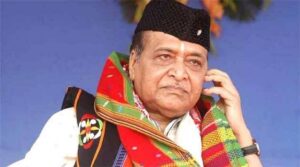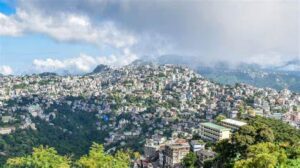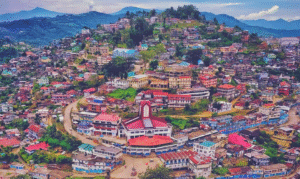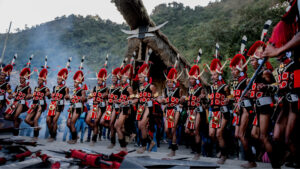Arunachal is the land of 26 major tribes. The Monpas are one of the major tribes located in the Tawang District, in the westernmost corner of the state. They are celebrated for their craftsmanship and artisan skills.
The Monpas tribe has been providing essential services to their community. Therefore they have a strategic socio-cultural existence. Monpa artisans have great respect and regard in their community.
The arts and crafts of the Monpas are rich in tradition. Their skill has been demonstrated for decades in a variety of crafts, including weaving, painting, and carving bamboo, producing paper, incense, ceramics, etc.
Wood Craft
The Tawang district is covered in a beautiful, green forest. The area is abundant in different types of wood. For decades, these are cut out and used for a variety of everyday lives. This cultivated their woodworking skills which is evident in their woodcarving. It is a particular craft that is exclusive to men.
“Trukpa” refers to the professionals engaged in the above-mentioned trades. The exquisitely carved woodwork of their low table, known as “Cho-tze”, is a famed trade. The panels on the other sides feature colorfully painted carvings of dragons, birds, or floral patterns. Everyday items such as the shallow, flat, rectangular instrument called a “Zan Shongbu” , used to knead flour, are also carved out of wood. The Monpas also make a variety of everyday utensils out of wood.
“Jandhong” is the name of a long, cylindrical wooden churn with brass accents. To churn butter tea, locals use this tool. They have a device called “Zob” for churning milk; which is larger than a Jangdhong. Using a wooden pestle, grains, and other foodstuffs are ground in a wooden mortar called a “Sheng Tsumrong.”
Weaving
From ancient times, the Monpas have been weaving cloth themselves to suffice their needs. Culturally, Monpa women nearly exclusively weave. From a very young age, girls receive instruction and training in the skill of weaving. If a family does not have a weaver, they either purchase woven clothing from the weaver or hire the weaver on an as-needed basis. However, the trade of weaving and trading clothes lies within the community.
Raw wool and cotton yarn are their main raw materials for weaving. The yarm is organically obtained by breeding sheep. Along with washing, combing, spinning, and weaving, they also shear their sheep. To supply their basic need for clothing, cotton yarn is imported from the plains which is woven into clothes.
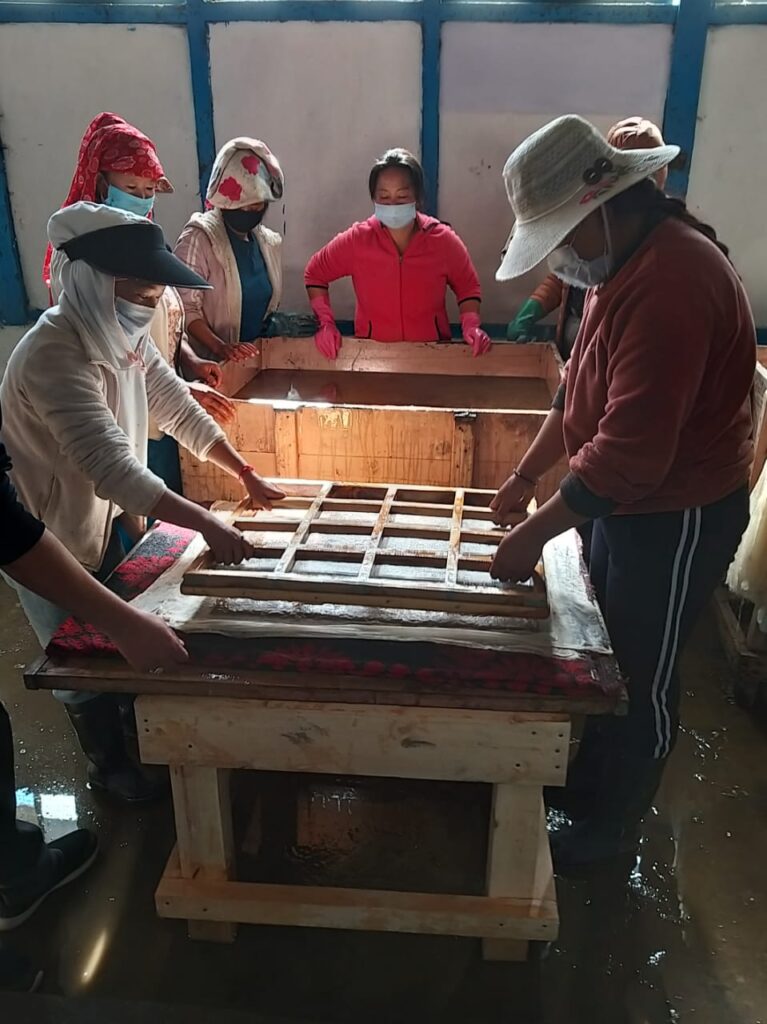
Yak hair is used to create exclusive blankets, haversacks, tents, and other items. Of all the carpets, this one is particularly noteworthy. They weave carpets with beautiful motifs of dragons, snow lions, birds, or flowers by blending various tones of woolen yarn.
Their textile bags, which are created by blending the five colors- red, yellow, white, black, and green, are equally elegant and creative.
Paper Making
Monpas are the only tribe in Arunachal Pradesh who know the art of making paper. Their paper is made from the bark of a shrub called Dapne Botanical Papercia(Shugu-Sheng). These high-quality papers produced are mainly used for religious purposes.
Many holy scriptures are written on ornate cardboard, consisting of several sheets of hand-made papers pasted together, and varnished over with a black pigment, upon which the letters are written in silver or gold.
Thanka
A thangka is a painting on cloth. This Tibetan phrase translates into a ‘recorded message’. The paintings stand out among Tawang’s arts and crafts. Other than designing, adorning, and finishing many everyday items, it is also a highly developed and crucial form of religious expression.
When most people first see Thanka paintings, they are struck by their power and intensity. They have a long life and keep much of their shine. However, since they are delicate, they must be stored in dry conditions.
Mask
The practice of mask manufacturing can be traced back to the Tibetan culture. Tibetans painted their faces with brownish-red pigment animal blood since the Neolithic epoch, giving them the appearance of wearing masks. Tibetans began to replicate that by using animal masks after being influenced by primordial Bonism’s totem worship.
When Tibetan Buddhists began to worship deities, their images were adapted into masks. Religious masks consist of three-dimensional,hard-shaped masks constructed from roughcasts.
They are regarded as sculptures. These masks symbolize gods and spirits in Buddhism. Religious masks are only used in performances or occasions.
Bamboo Craft
Although not abundantly found, bamboos are used for house-building and daily articles. Their works in basketry are of high craftsmanship.
Hat-making
The most common headgear of the Monpas is the hat made of Yak’s felt. It is called ngama-shom or tzithpa-sham in the Tsoksom area, nga-sha in Mago-Thingbu, and Dhueja in the Zemithang area.
Shoe-Making
The severe cold climate of the area, especially during winter months inspired the Monpas to evolve a device to cover their feet as well. The technique employed by the Monpas in making shoes is very simple. However, the trade is dying because of industrialization. Only during festive gatherings, one can see a few locals in their traditional shoes.
Pottery
Pottery is also found among the Monpas. Men mainly do this craft and it flourishes commercial scale in Kangteng village which lies to the south-west of Tawang Township.
They make earthen vessels of various sizes, which are used primarily for their everyday lives. Cooking, brewing liquor, and storage of fermented cheese, etc are some of the main reasons. The products are bartered for various articles or sold in cash.
Incense-making
Basic raw materials are used by the Monpas in making incense out of leaves and stems of the juniper tree. Other ingredients used are several different herbs locally known as Balu, solu, Adung-Karpo, Shole-Karpo, etc. For adhesive, the bark of trees, locally known by the name of yang-yang-ma and dhongze is used.
Conclusion
For centuries, the Monpas of Tawang have upskilled their craftsmanship to sustain their lifestyle amidst resource constraints. The Monpas are highly respected members of the Arunachal community. Their efforts stand as an attestation to preserving and advancing the ancient traditions breathing air into their fading crafts. The community safeguards its rich cultural heritage for generations to come by sustaining these practices.
Unravelling a billion untold stories, one chapter at a time, Humans of Northeast takes you on a discovery through vibrant Northeast India – a land rich in people, places, and culture. Ready to immerse yourself in more such stories? Visit our page HONEI to read more about narratives that inspire and uplift.
